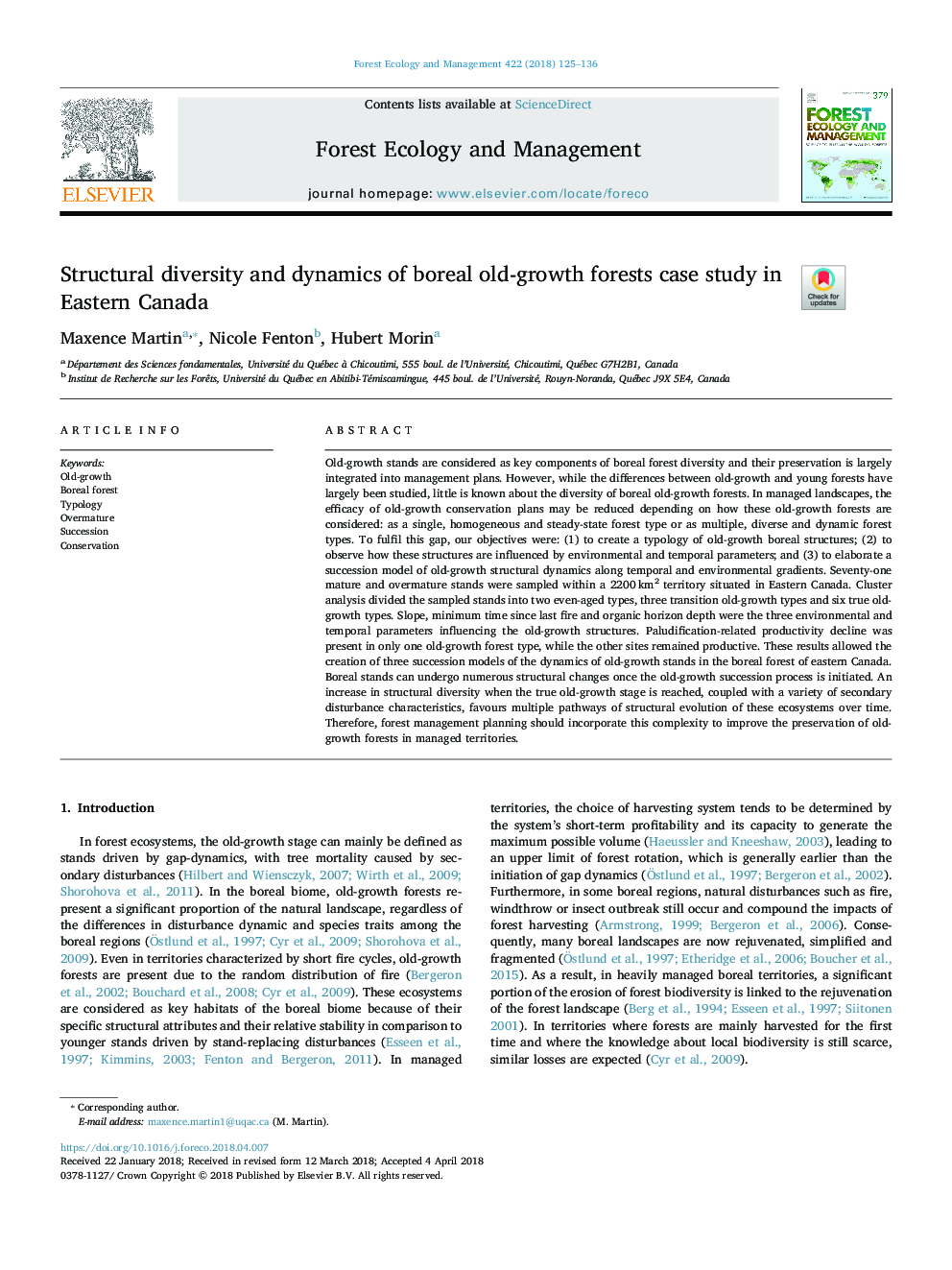| Article ID | Journal | Published Year | Pages | File Type |
|---|---|---|---|---|
| 6541658 | Forest Ecology and Management | 2018 | 12 Pages |
Abstract
Old-growth stands are considered as key components of boreal forest diversity and their preservation is largely integrated into management plans. However, while the differences between old-growth and young forests have largely been studied, little is known about the diversity of boreal old-growth forests. In managed landscapes, the efficacy of old-growth conservation plans may be reduced depending on how these old-growth forests are considered: as a single, homogeneous and steady-state forest type or as multiple, diverse and dynamic forest types. To fulfil this gap, our objectives were: (1) to create a typology of old-growth boreal structures; (2) to observe how these structures are influenced by environmental and temporal parameters; and (3) to elaborate a succession model of old-growth structural dynamics along temporal and environmental gradients. Seventy-one mature and overmature stands were sampled within a 2200â¯km2 territory situated in Eastern Canada. Cluster analysis divided the sampled stands into two even-aged types, three transition old-growth types and six true old-growth types. Slope, minimum time since last fire and organic horizon depth were the three environmental and temporal parameters influencing the old-growth structures. Paludification-related productivity decline was present in only one old-growth forest type, while the other sites remained productive. These results allowed the creation of three succession models of the dynamics of old-growth stands in the boreal forest of eastern Canada. Boreal stands can undergo numerous structural changes once the old-growth succession process is initiated. An increase in structural diversity when the true old-growth stage is reached, coupled with a variety of secondary disturbance characteristics, favours multiple pathways of structural evolution of these ecosystems over time. Therefore, forest management planning should incorporate this complexity to improve the preservation of old-growth forests in managed territories.
Related Topics
Life Sciences
Agricultural and Biological Sciences
Ecology, Evolution, Behavior and Systematics
Authors
Maxence Martin, Nicole Fenton, Hubert Morin,
